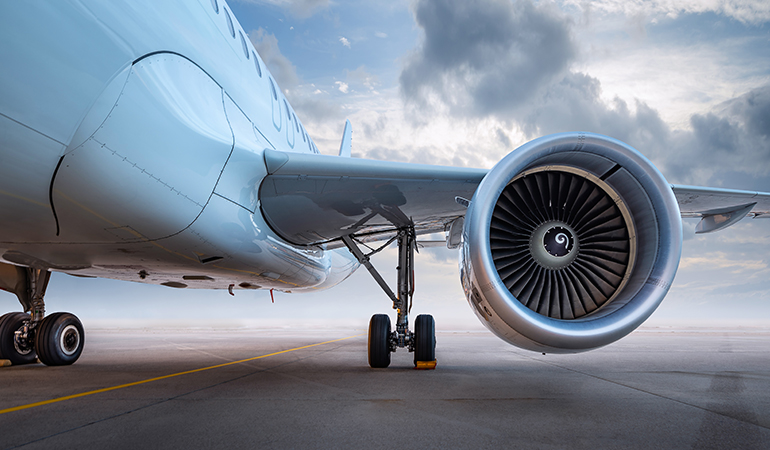Like any industry, those in the aviation industry must adapt and improve every year to remain competitive, help passengers travel safely, increase profits, and streamline manufacturing and operations. However, as our society becomes more digitized in the 21st century, stakeholders in the industry must continue to adapt with them. You may use some of this technology today, but we believe some of the tips below will become more mainstream in the year to come.
Smart Hangars
Smart hangars are designed to be much more secure and intuitive than traditional hangars. With the incorporation of advanced 4G fiber optic internet, they can create “technology blankets” with dedicated servers for each airline/hangar to create secure channels, improving the ability to communicate on the fly. This is crucial when dealing with real-time flight logs, especially when additional hazards are incorporated such as inclement weather.
Plus, the hangars are designed with security cameras, emergency doors that close quickly, and fire alarms/sprinklers that prevent fires from spreading. Planes cannot be tampered with because they are locked securely in these hangars, and passengers can board safely because the security measures for each flight are run through the hangar’s computer system. Charter flight companies have complete control over every flight, and the hangars can even block hackers who are trying to hack the plane’s computer.
Robotic Technology
Robotic technology is used to assist passengers in airports around the world. However, more airports are investing in robot assistants. A basic example of in commercial airports currently is the moving walkway and automatic ticket kiosks, but we expect the incorporation of robotic technology to widely expand. Robots could offer better customer service to people who check in the curb, and the airport might have roving robots who can help passengers who are confused, lost, or need flight documentation.
Passengers can get flight information from a robot that greets them when they get off the shuttle. There are even robot drones that prevent birds from congregating near the runway. These scarecrow simulators can prevent death and injury from aviation accidents. Robots are easy to program, and they can help passengers when human associates are busy. Plus, you can deploy as many robots as you want without paying them. Robotic technology is a good thing for people who have just landed in a new place. The robots that sit outside every gate can deliver information to the burning questions for customers to find their baggage claim, layover flights, etc.
Biometric Services
Biometrics can serve multiple purposes in a commercial airport. For example, they can be used during TSA check to ensure there is no identity theft. Additionally, they can be used at the gates to ensure the right person is getting on a flight. Airlines could use biometrics that have been collected along with the traveler’s driver’s license. Plus, the passengers could enter their biometric information online before they go to the airport.
With obvious preventative measures in mind, these additional safety checks can lead to safer airplanes when pilots must enter biometric information to change the plane’s direction. Hijackers could not take over a plane because they do not have the biometric information from the pilot. The plane can fly on its own, and the hijacker must wait for the plane to land itself.
Biometrics could be used to help passengers travel paperlessly through the airport. If you put your thumbprint on your boarding pass when you get to the airport, you can use your thumbprint to get through security and get on the plane. You do not even need to store the boarding pass on your plane. Plus, you never need to worry about losing a paper ticket.
Liquids You Can Take On The Plane
Security companies are creating x-ray and scanning machines that can detect the contents of liquid packages. You might be able to take liquids on a plane again because the scanning knows if you are carrying hazardous chemicals. The traditional liquid rules may not apply when you get to certain airports.
Security screenings are much easier to complete when the machine tells you everything you need to know. Plus, someone like an asthmatic does not need to explain what is in their inhaler. The screener knows when to pass passengers through, and they will cut down on baggage checks or advanced screenings that can be very uncomfortable.
Sustainable Aircraft Management
Airports are trying to land planes quickly, cut back on fuel waste, and prevent planes from creating too many greenhouse gases when taking off. Adjusting air traffic control procedures at every airport makes planes a bit more sustainable. Plus, sustainable aircraft fuels are available for planes that use new fuels.
Airlines are trying to be more sustainable because they can save money. In fact, you can review every airline you fly with to find the greenest company. Also, you might want to sign petitions for your local airport to use sustainable take-off and landing techniques.
Conclusion to aviation trends in 2020
Aviation infrastructure is changing every year to make flying easier, cheaper, and sustainable. Charter companies often lead the way in sustainable technology because they can use smart hangars, robots, and automated security. Plus, airports are offering sustainable fuel, robot assistants, and paperless flight options. If your local airport does not use these things, you should start lobbying for a better travel experience. If you manage an airline or work in the industry, you should push for these technologies. Investors can buy into new technologies early, and air travel will become a more sustainable and safer way to travel globally.
This article was written by Dominic LoBianco.
Media Specialist, Tectonic Management Group
Dominic LoBianco is a contributing writer and media specialist for Tectonic Management Group. He regularly produces content for a vast array of media outlets.


Comments